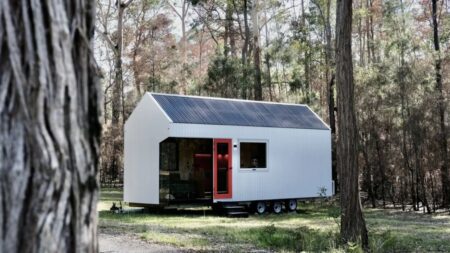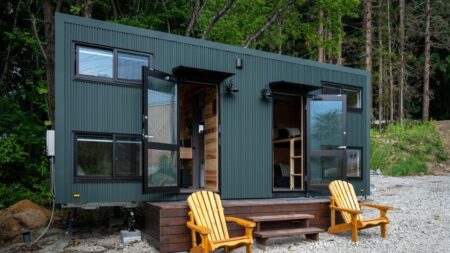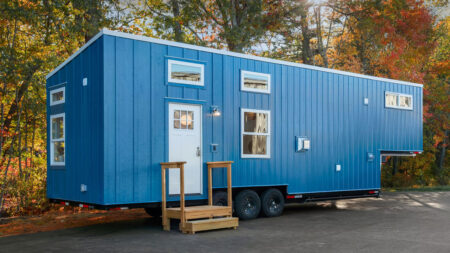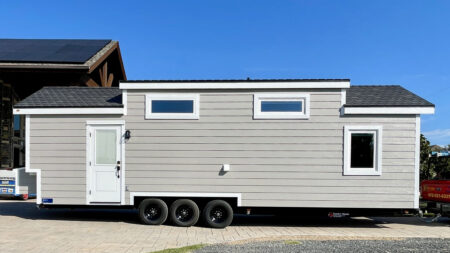The 2011 Christchurch earthquake in New Zealand affected many people’s lives, including Andy, a father of two. It destroyed several buildings, killing around 200 people. Andy got trapped in a 25-story building for five hours during the crisis. This incident changed Andy and he decided not to spend his life sitting in an office but rather live tiny and explore life on wheels. Therefore, he built a skoolie for himself and his two kids. He converted a 1994 Hino bus – measuring 36 feet long and 8.2 feet wide – into a fully functional house on wheels with a livable area of about 300 square feet.
The exterior of the school bus home is painted in red and white accents but the real beauty of the house lies in its layout and intelligent utilization of space. It features a modular kitchen with a four-burner stove, grill, and oven. Above the cooktop is an extraction fan to clear off smoke and smells. The bamboo countertop has buttons for the water pump and hot water cylinder that runs on propane. The sink is small but has a tap that can be rotated to face outside and with a shower attachment, it turns into a nice outdoor shower.
The windows slide open for better airflow and have fly screens to avoid unwanted guests like bugs, flies, and insects. Beneath the countertop are four drawers to store cutlery, crockery, pots, and pans. When traveling, the drawers are secured in their position using bungees also known as shock cords. A big cupboard underneath the sink conceals the garbage bin and cleaning essentials. There are multiple storage spaces above the countertop.
The other side of the kitchen serves as a dinette area for two people with an underneath storage. An additional stool creates seating for a third person. The dinette features a semicircular tabletop and has overhead storage. The skoolie also offers a pantry area and apartment-size Samsung digital inverter fridge which is economical with power consumption. There are more shelves above the pantry too.
The living area is in the front end of the skoolie. It has a wooden stove that keeps the inside nice and toasty during cold weather and can also be used for cooking. The wood storage is right next to the stove. There is a hammock chair that can be suspended in the bus using hooks and above it is the skylight making a perfect spot to relax and gaze at the vast sky.
The couch in the living area serves as an extra bed. It has three seat belts to secure people for safety. There is storage underneath it. The windows have roller blinds to ensure privacy especially when the skoolie is parked in busy areas frequented by people. A bedroom with bunk beds for the kids with reading lights is past the kitchen.
Also Read: Couple Converts 40ft Skoolie Into Off-Grid Family Home With Clever Storage
There is a bathroom with a full-size shower with a detachable showerhead. The 15 liters hot water system ensures an adequate supply of water. It has an automated Ogo composting toilet which is quite new to the market. The back end of the bus has 250 liters of water storage and the same amount of grey water. The back of the bathroom has a wardrobe space and utility cupboards. It houses the batteries used to power the skoolie. A rooftop solar panel system suffices for power requirements, ensuring off-grid adventures.
The rear end features a master bedroom with a queen-size bed. It gets a good amount of natural light because of the three side windows. The space under the bed stores the 250-liter water tank and sporting equipment. This bedroom features overhead storage for personal belongings. The family of three uses this space to enjoy movie nights as it feels like a lounge area to relax and chill.
Andy bought the bus for $6,250 and around $25,000 was spent on materials and making it livable. The total cost of building the skoolie was around $31,250. Right now, Andy is looking to sell skoolie home so he can get started on a new adventure.



















Follow Homecrux on Google News!




